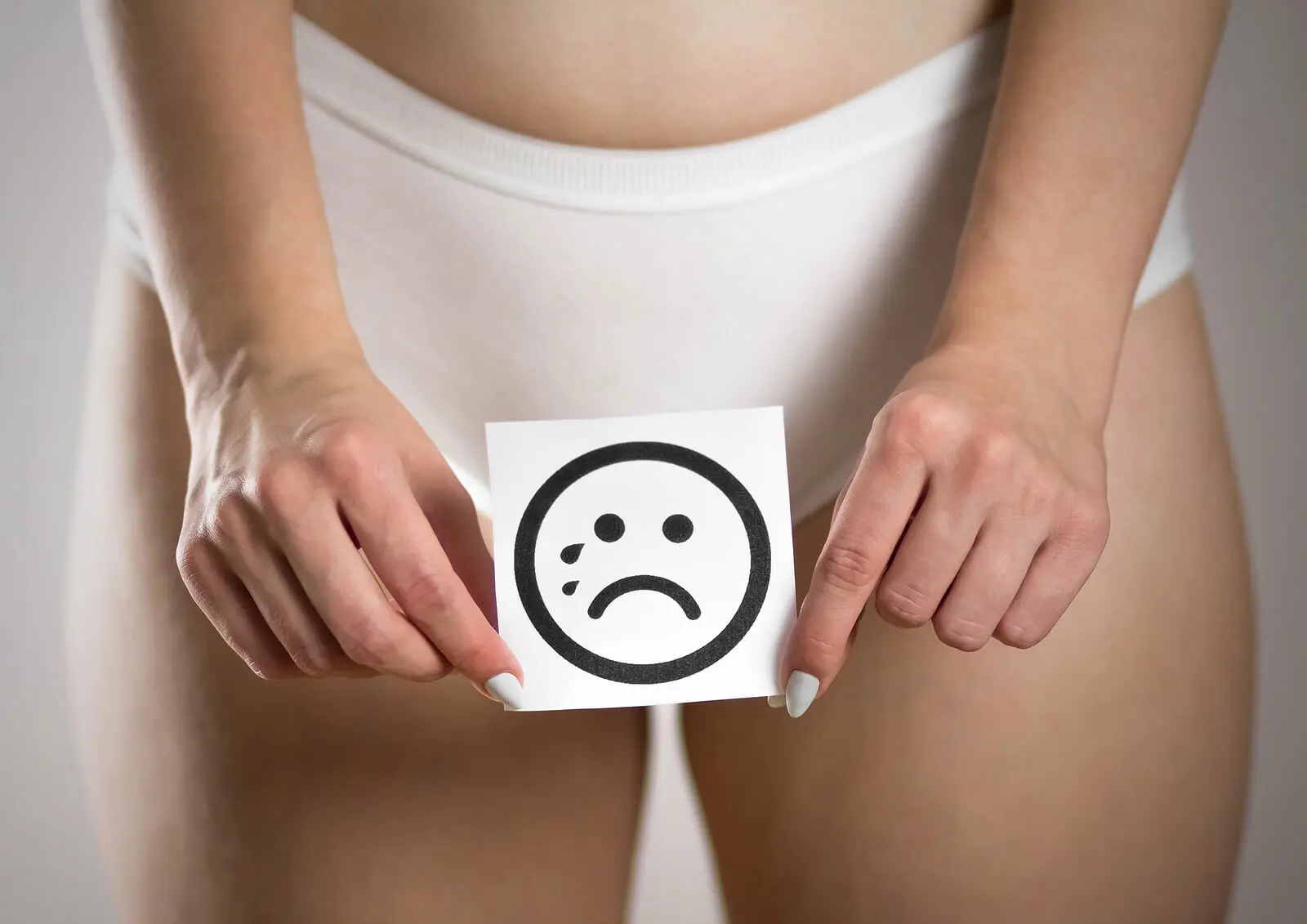Irregular Periods in Adolescence: What Causes Them?

Irregular periods in adolescence are very common. In fact, menstrual cycle variability is normal at any stage of life, but it occurs more often in adolescents.
That said, it’s also important to learn to identify when irregular periods in adolescence are a sign that something is wrong. Sometimes, there’s a health problem or there’s a specific factor that is causing it.
Certain aspects, such as the quality of nutrition, body mass index, socioeconomic status or mood, among others, influence the occurrence of irregular periods in adolescence. Also, it can be the effect of a health problem. Let’s have a closer look.
Adolescence and the menstrual cycle

Let us begin by remembering that menstruation is the shedding of the endometrium, a mucous membrane that lines the uterus. Once it has shed, bleeding occurs and this is expelled to the outside. This occurs every month due to the effect of female hormones.
A normal menstrual cycle lasts, on average, 28 days. These are counted from the start of one period to the start of the next. It’s still considered normal if the period occurs seven days before or seven days after. That is, between 24 and 38 days.
Some experts think that, as irregular periods in adolescence are very common, it could be considered normal for the menstrual cycle to be as long as 21 to 45 days. However, some doctors caution that this could also be a symptom of a health problem, and treating it as normal would delay diagnosis.
The evolution during adolescence
The average age of the first menstruation, or menarche, is 12.5 years. However, it’s considered normal for it to occur between the ages of 10 and 16. When it occurs earlier or later, it could be a sign of an abnormality.
Some girls have menarche at 8 or 9 years of age. In these cases, it’s called precocious puberty. This is usually associated with metabolic syndrome and becomes a risk factor for developing cardiovascular problems in adulthood.
On other occasions, menarche occurs after the age of 16. Then, we speak of late or delayed puberty. This is associated with increased fertility problems and could also be a sign of a chromosomal abnormality or another serious difficulty.
Irregular periods in adolescence
As already mentioned, irregular periods in adolescence are very common. It’s normal, for example, for a girl to have her period and then have a delay of several months before her next one. The reasonable range is six months without a period.
If, after six months, she still hasn’t had another period, then it’s first advisable to wait another three months. After this period, if she doesn’t have a period, or amenorrhea, it’s best to consult your doctor. Very short cycles, shorter than 21 days, or very long cycles, longer than 38 days, are also a reason for consultation, although they aren’t always abnormal.
Irregular periods in adolescence are also manifested in bleeding. If it lasts more than seven days or less than two, it’s considered abnormal. Also, when there’s too little or too much menstrual flow, or bleeding occurs outside of menstruation, then a medical evaluation is important.
Why does it happen?
The main cause of irregular periods in adolescence is the presence of anovulatory cycles; that is, cycles without ovulation. In this process, the ovaries release an egg, while hormones generate changes in the uterus in order to make it suitable for pregnancy.
You might also be interested in: What Does a White Discharge Before Menstruation Mean?
If the egg isn’t fertilized, the uterine lining is shed and comes out through the vagina in the form of bleeding. If there’s no ovulation, the process isn’t completed. In these cases, menstruation doesn’t occur and, when it does, it causes long periods.
It’s common for the first menstrual cycles to be anovulatory. It’s estimated that this occurs in between 30% and 55% of adolescent girls during the two to four years after their first menstrual period. In most cases, this is the cause of the irregularity.
Other causes
Usually, over time, the menstrual cycle becomes more regular and stable. Other possible causes of irregular periods in adolescence are as follows:
- Organic immaturity. The hypothalamus, pituitary, or ovaries haven’t reached sufficient maturity.
- Excessive physical exercise. This may cause delayed menarche, absence of ovulation, or the absence of menstruation.
- Eating disorders. If there isn’t enough adipose tissue, or fat, in the body, menstrual dysfunction may occur.
- Excess body fat also interferes with the menstrual cycle.
- Pregnancy
- Stress
- Radiation or chemotherapy
- Injury to the uterus
- Thyroid problems. These often cause menstrual irregularities.
- Turner or Swyer syndromes. These are genetic pathologies that can cause irregular periods in adolescence.
- A tumor in the pituitary gland or ovaries
- Dysfunction in the hypothalamus
- Anatomical abnormalities in the genital tract
- Polycystic ovarian syndrome
- Primary ovarian insufficiency
- Hyperandrogenism. This is the excessive production of androgens, which causes hair to grow on the face, chest and abdomen.
- Sexually transmitted diseases
What to do?

Irregular periods in adolescence as such are not a reason for medical consultation. A professional should only be consulted if the absence of menstruation, or amenorrhea, lasts for more than six months, if there are large contrasts in the amount of bleeding, or if bleeding occurs outside the period.
It’s also advisable to see a doctor in the following cases:
- Periods of less than 21 days that recur frequently.
- A period that lasts more than seven days.
- Menstruation that continues to have significant irregularities for three years.
- Very strong menstrual pain or cramps.
- Hair growing on the face, chest, or abdomen.
Most commonly, the physician will perform a pelvic examination and, in some cases, ask for a blood test. In general, disorders associated with irregular periods in adolescence can be successfully treated with drugs. Only in a few cases are more specialized treatments required.
Irregular periods in adolescence shouldn’t be a cause for alarm
Irregular periods in adolescence are just one of the issues that girls face at this age. It isn’t advisable to alarm them regarding this issue, as this can cause unnecessary anxiety in girls who are undergoing a significant transformation in their bodies.
It’s very important for adolescents to be well informed about all these issues, as this will help them to feel calmer and to be more capable of detecting any possible abnormalities.
All cited sources were thoroughly reviewed by our team to ensure their quality, reliability, currency, and validity. The bibliography of this article was considered reliable and of academic or scientific accuracy.
- MedlinePlus. Menstruación. https://medlineplus.gov/spanish/menstruation.html
- Soriano-Guillén, L., & Argente, J. (2011, May). Pubertad precoz central: aspectos epidemiológicos, etiológicos y diagnóstico-terapéuticos. In Anales de Pediatría (Vol. 74, No. 5, pp. 336-e1). Elsevier Doyma.
- De Pediatría, S. A., & Subcomisiones, C. (2010). Trastornos del ciclo menstrual en la adolescencia. Arch Argent Pediatr, 108(4), 363-369.
This text is provided for informational purposes only and does not replace consultation with a professional. If in doubt, consult your specialist.








